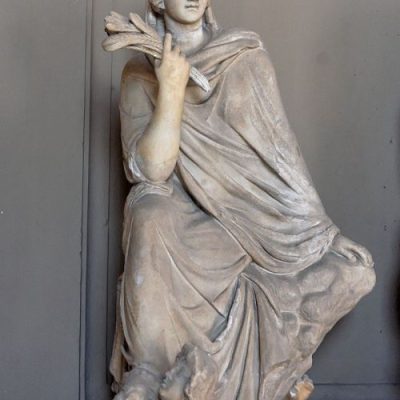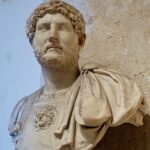On December 13, 115 CE1, an unusually strong earthquake occurred in Antioch. Current estimates give strength of 7.5 on the Richter scale and 11 on the Mercalli scale. Antioch and the surrounding area were completely destroyed. To top it all off, the quake caused a local tsunami that seriously damaged the port of Caesarea Maritima in Judea (present-day Israel).
At the time of the earthquake, Emperor Trajan and his successor Hadrian were present in the region. legate. They were present in Syria from January 114 CE. They were in the residence Antiochia ad Orontem, which was the command headquarters for the time of the war with the Parthians. Trajan had just returned from a campaign in Armenia when an unexpected cataclysm occurred. Both, wounded, had barely escaped from the scene of the cataclysm. With time, they took steps to rebuild the affected region.
The quake’s epicentre was in the valley of the Orontes River. The quake was so strong that it completely destroyed Antioch, Daphne and four other towns – including Apamea. Additionally, the earthquake triggered a tsunami that destroyed the port in Caesarea Maritima in Judea.
Antioch was one of the most important and largest Roman cities. In 115 CE, the population of Antioch was approximately 500,000. The most colourful description of the cataclysm was left to us by Cassius Dio in his “Roman History”. Cassius says that in winter the city was full of soldiers and civilians because the emperor himself came to the city. As he claims, a terrifying roar was heard first, which was soon followed by an earthquake. The tracts of land with buildings were lifted up. Trees and people were thrown into the air. People died either because of hunger, trapped in collapsing buildings or from falling debris and debris. Trajan, who was slightly wounded, managed to escape through the window of his room and received help from the inhabitants. Then the emperor took refuge in the hippodrome arena.
We have no information on how Trajan’s wife, Plotinus, or his deputy, Hadrian, survived the quake. The famous victim of the cataclysm was consul ordinarius Marcus Pedo Vergilianus. It is estimated that as a result of the quake and its effects, 260,000 people died. The population of Antioch decreased significantly and many neighbourhoods were in ruins.
Shortly after the disaster, Trajan took steps to rebuild the affected region. Among other things, he commissioned the construction of a new aqueduct2, due to the fact that the earthquake destroyed the 6 km water supply from Daphne to Antioch. Construction work ended only during the reign of Hadrian. Moreover, Trajan ordered to erect a copy of the statue of Tyche by Eutychides of Sykion in the city – it was supposed to commemorate the reconstruction of the city. Interestingly, most of the mosaics that archaeologists find in the city were created after the earthquake.
More than a year and a half after the earthquake, Hadrian was declared emperor by the army. Until September 117 CE, he remained there, then went to the capital. The Byzantine chronicler Jan Malalas, who lived in the 5th – 6th century CE, says that after taking power, Hadrian also carried out activities aimed at rebuilding the province. In addition to building an aqueduct, he commissioned the erection of the theatron, the Temple of the Nymphs, and his large statue.









